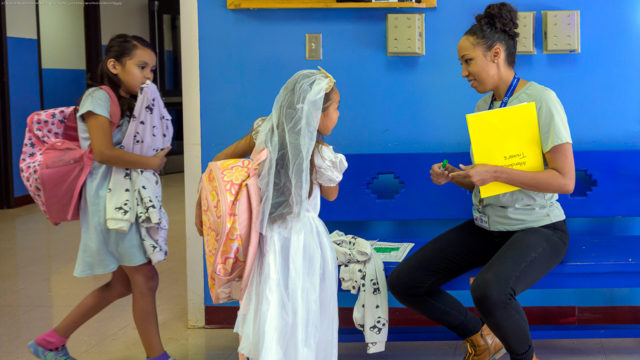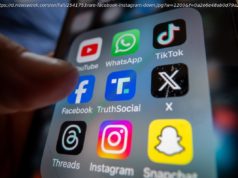Array
After missing 40 days of school last year, Tommy Betom, 10, is on track this year for much better attendance. The importance of showing up has been stressed repeatedly at school – and at home.
When he went to school last year, he often came home saying the teacher was picking on him and other kids were making fun of his clothes. But Tommy’s grandmother Ethel Marie Betom, who became one of his caregivers after his parents split, said she told him to choose his friends carefully and to behave in class.
He needs to go to school for the sake of his future, she told him.
„I didn’t have everything“, said Betom, an enrolled member of the San Carlos Apache tribe. Tommy attends school on the tribe’s reservation in southeastern Arizona. „You have everything. You have running water in the house, bathrooms and a running car.“
A teacher and a truancy officer also reached out to Tommy’s family to address his attendance. He was one of many. Across the San Carlos Unified School District, 76% of students were chronically absent during the 2022-2023 school year, meaning they missed 10% or more of the school year.
___
This story is part of a collaboration on chronic absenteeism among Native American students between The Associated Press and ICT, a news outlet that covers Indigenous issues.
____
Years after COVID-19 disrupted American schools, nearly every state is still struggling with attendance. But attendance has been worse for Native American students – a disparity that existed before the pandemic and has since grown, according to data collected by The Associated Press.
Out of 34 states with data available for the 2022-2023 school year, half had absenteeism rates for Native American and Alaska Native students that were at least 9 percentage points higher than the state average.
Many schools serving Native students have been working to strengthen connections with families, who often struggle with higher rates of illness and poverty. Schools also must navigate distrust dating back to the U.S. government’s campaign to break up Native American culture, language and identity by forcing children into abusive boarding schools.
History „may cause them to not see the investment in a public school education as a good use of their time“, said Dallas Pettigrew, director of Oklahoma University’s Center for Tribal Social Work and a member of the Cherokee Nation.On-site health, trauma care helped bring students back
The San Carlos school system recently introduced care centers that partner with hospitals, dentists and food banks to provide services to students at multiple schools. The work is guided by cultural success coaches – school employees who help families address challenges that keep students from coming to school.
Start
United States
USA — Science Native American students miss school at higher rates. It only got worse...






